Imagine turning your bare outdoor walls and fences into a stunning tapestry of living plants! Did you know that an outdoor vertical container garden in Florida can create microclimates that reduce the surrounding temperatures by up to 15 degrees Fahrenheit?
As someone who’s spent countless hours in the hot Florida sun, I can tell you that vertical gardening is a game-changer for cooling off our outdoor spaces.
Tired of looking at that plain fence? Struggling with limited patio space? Anyone can master the art of creating stunning outdoor vertical container gardens that can handle Florida’s intense sun, heavy rains, and occasional tropical storms.
Here are some proven strategies for turning your outdoor vertical space into a thriving, head-turning container garden that not only survives but thrives in our challenging climate. Ready to take your outdoor space to new heights? Let’s dig in!
Planning Your Florida Vertical Container Garden
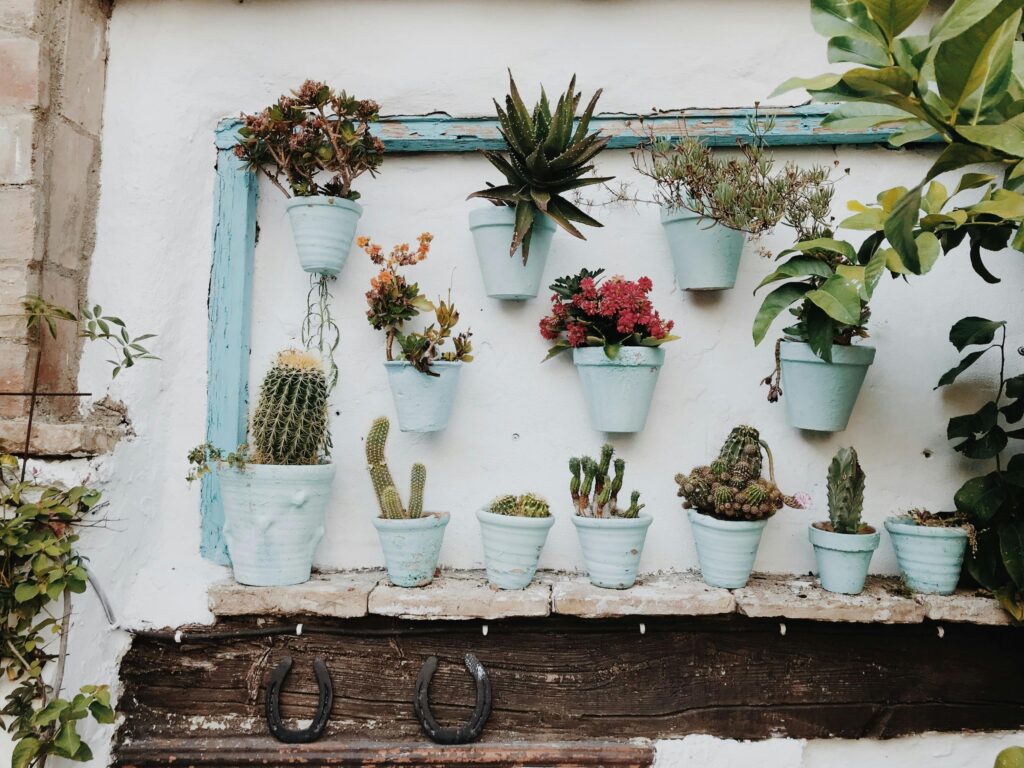
Creating a vertical container garden in Florida starts with thoughtful planning. Here’s how to set yourself up for success:
Assessing Your Space and Sunlight Conditions
Begin by evaluating the area where you’ll place your vertical container garden. Is it a sunny patio, a shaded balcony, or a wall with partial light? Most plants suitable for vertical gardens need at least 4-6 hours of sunlight daily.
Observe the space throughout the day to understand light exposure, as Florida’s intense sunlight can differ dramatically depending on your location.
Choosing the Right Location for Optimal Growth
Position your vertical garden where plants can thrive but also where you can easily access them for watering, pruning, and harvesting. South- or east-facing walls work well for sun-loving plants, while west-facing walls might require additional shading during the hottest parts of the day.
If you’re limited on space, consider portable systems that can be relocated to catch the best light.
Understanding Florida’s Microclimate Challenges
Florida’s climate varies from humid and rainy to dry and windy, depending on the season and region. Coastal areas might deal with salty air, while inland areas face intense heat and humidity.
Choose materials for your vertical container garden that can withstand these conditions, such as UV-resistant plastic or treated wood. For plants, select varieties that are heat-tolerant and adaptable to changing weather patterns.
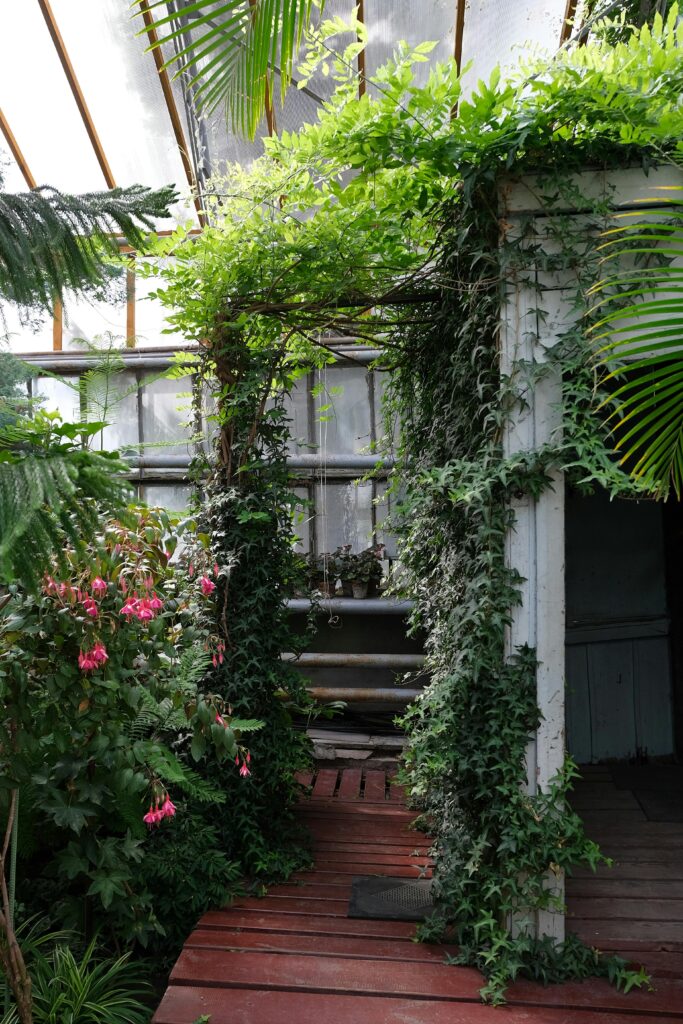
Setting Realistic Maintenance Expectations
Vertical gardens require a bit more attention than traditional container gardens. Watering can be more frequent, as plants in vertical systems tend to dry out faster.
Fertilizing and pest control may also require a closer eye. Consider starting small to get the hang of maintenance routines before expanding your setup.
Budgeting for Materials and Plants
Costs can add up quickly with vertical container gardening, especially if you’re investing in modular systems, trellises, or specialized planters. Determine your budget for essential items like containers, soil, and plants.
DIY options like repurposed pallets or inexpensive hanging baskets can help you save money while creating a unique aesthetic. Allocate funds for long-term essentials like fertilizers, water systems, and replacements for any wear-and-tear.
With thoughtful planning, you’ll be ready to build a vertical container garden that thrives in Florida’s unique climate while enhancing your home with greenery and color.
Essential Vertical Garden Systems for Florida Homes
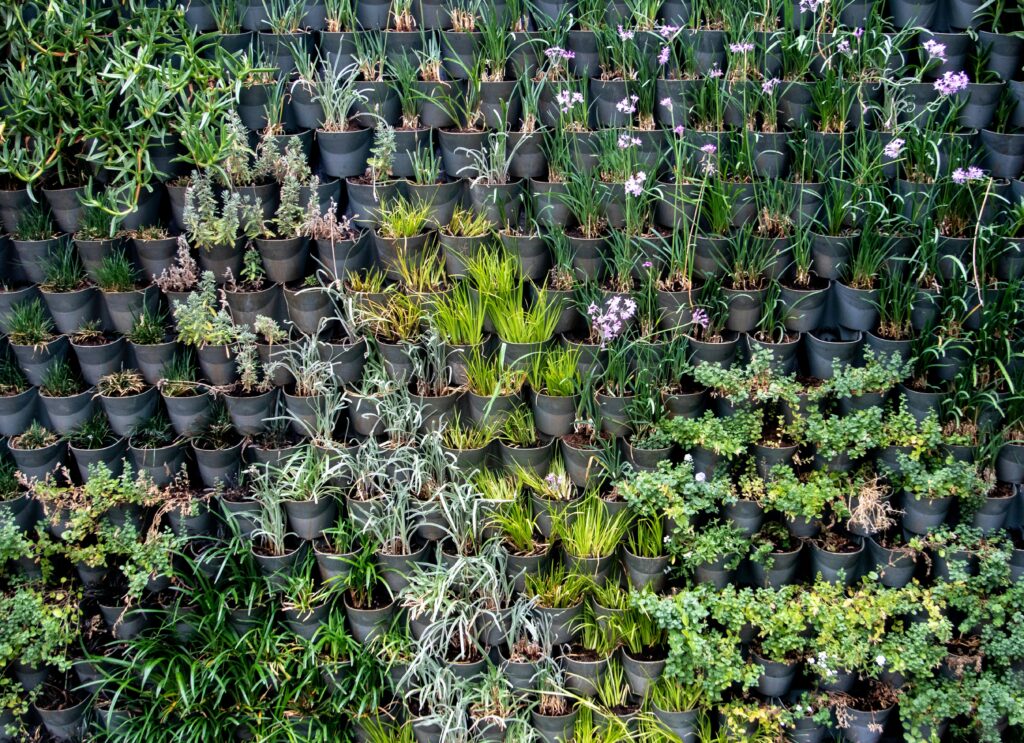
When creating a vertical container garden for your Florida home, choosing the right system is key. Here’s a breakdown of the pros and cons of popular vertical gardening options:
Wall-Mounted Planters and Pocket Systems
- Pros: Great for small spaces; visually striking; perfect for herbs, leafy greens, and flowers. Pockets are often lightweight and easy to install.
- Cons: Require frequent watering, especially in Florida’s heat; wall damage may occur if not properly sealed against moisture; not ideal for heavy plants.
Modular Vertical Garden Panels
- Pros: Customizable and scalable; excellent drainage and irrigation options; professional appearance.
- Cons: Higher upfront cost; may need professional installation; some systems can be heavy and require a sturdy structure for support.
DIY Pallet Gardens with Weather Protection
- Pros: Affordable and eco-friendly; customizable size; a rustic, charming aesthetic.
- Cons: Wood may degrade in Florida’s humidity unless sealed; can harbor pests like termites; requires careful positioning to prevent waterlogging.
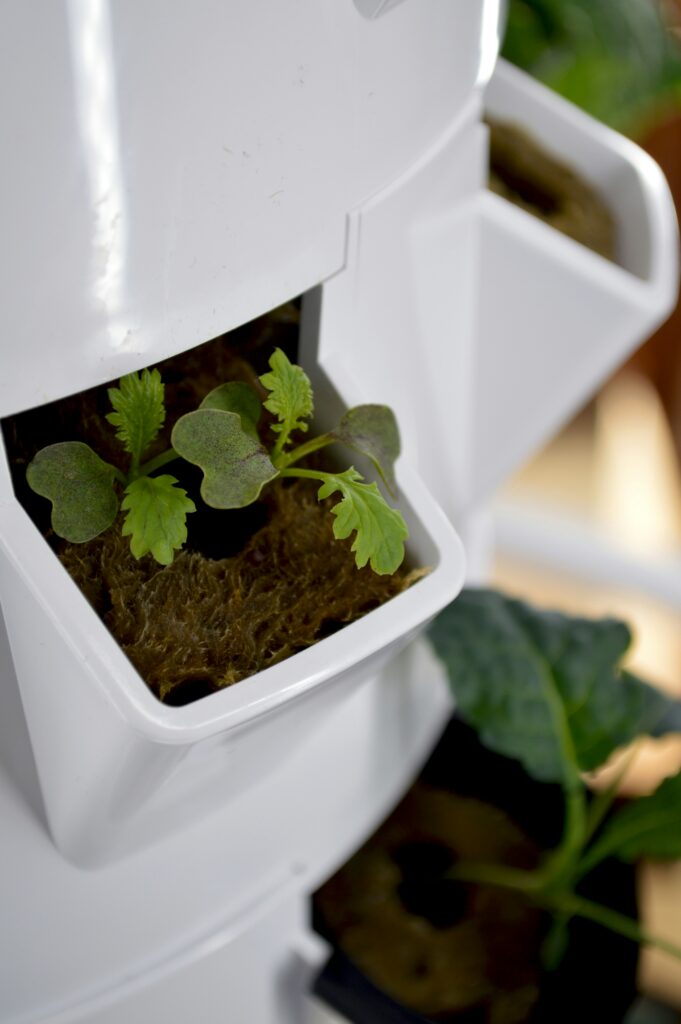
Trellis and Vine Support Systems
- Pros: Ideal for climbing plants like tomatoes, beans, and passionflower; allows vertical gardening for larger plants; cost-effective and easy to set up.
- Cons: May not provide as much density for plant coverage; requires regular maintenance to guide and secure vines; exposed plants may suffer from wind damage.
Stackable Container Options for Flexibility
- Pros: Portable and easy to rearrange; perfect for small spaces or renters; great for layering herbs, strawberries, or compact vegetables.
- Cons: May require more frequent watering; less stable in windy conditions; limited root space for larger plants.
Each system offers unique advantages, so mix and match to find what works best for your space, plants, and budget. A Florida vertical container garden can be as simple or elaborate as you like!
Best Plants for a Florida Vertical Container Garden
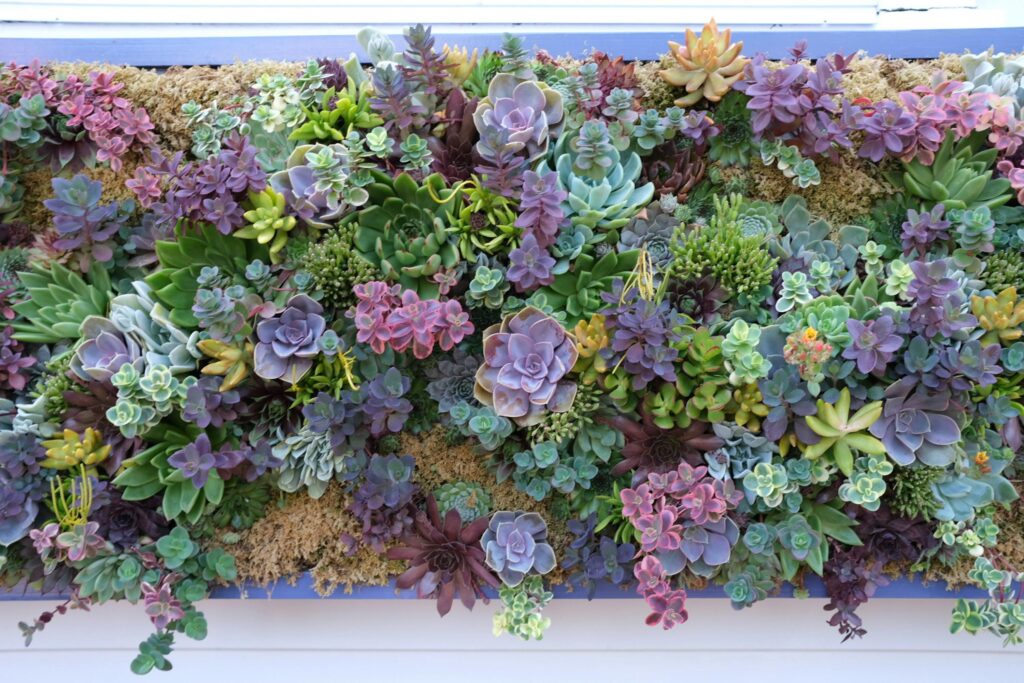
Choosing the right plants is essential to creating a thriving vertical garden in Florida’s unique climate. Here are some top picks for each category:
Heat-Tolerant Flowering Varieties
- Bougainvillea: Vibrant and hardy, perfect for sunny spots.
- Mandevilla: Elegant trumpet-shaped blooms in shades of pink, red, and white.
- Portulaca (Moss Rose): Small, colorful blooms that thrive in the heat.
- Angelonia: Long-lasting “summer snapdragons” in soft pastels or vivid purples.
Trailing Plants for Cascading Effects
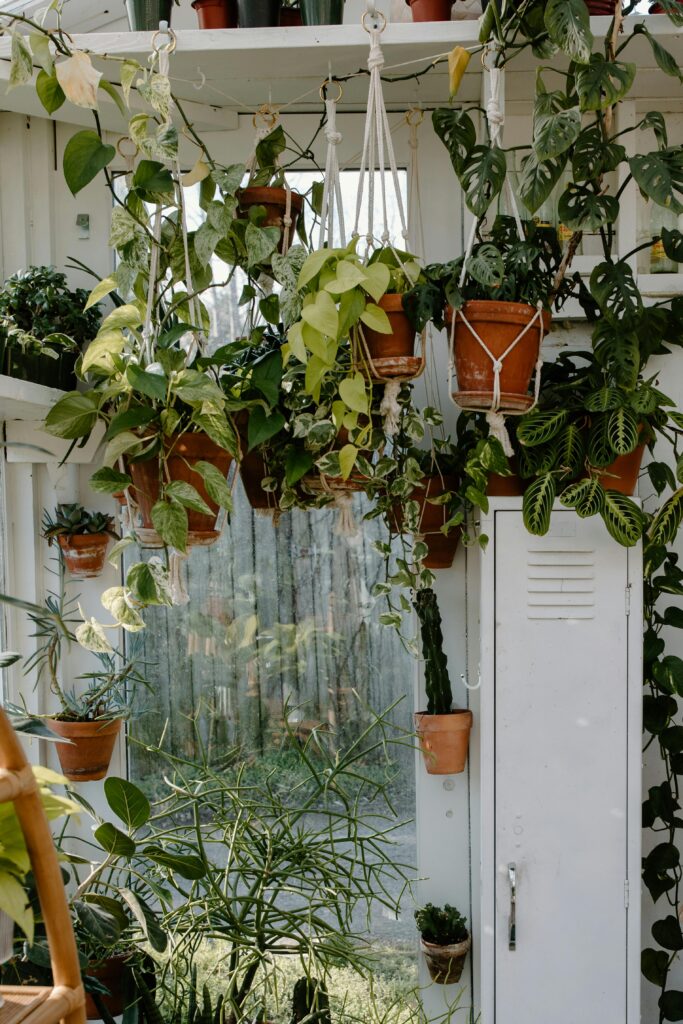
- Sweet Potato Vine: Fast-growing with bold, colorful foliage.
- Petunias: Cascading blooms in a range of colors, ideal for sunny locations.
- Bacopa: Tiny flowers that spill gracefully over edges, perfect for partial shade.
- Ferns: Delicate, feathery fronds that add lush greenery.
Drought-Resistant Succulents and Air Plants
- Sedum: Hardy and colorful, with varieties like ‘Dragon’s Blood’ or ‘Autumn Joy.’
- Echeveria: Rosette-forming succulents that add texture and charm.
- Tillandsia (Air Plants): No soil needed! Just tuck them into crevices or hang them.
- String of Pearls: Unique bead-like foliage that cascades beautifully.
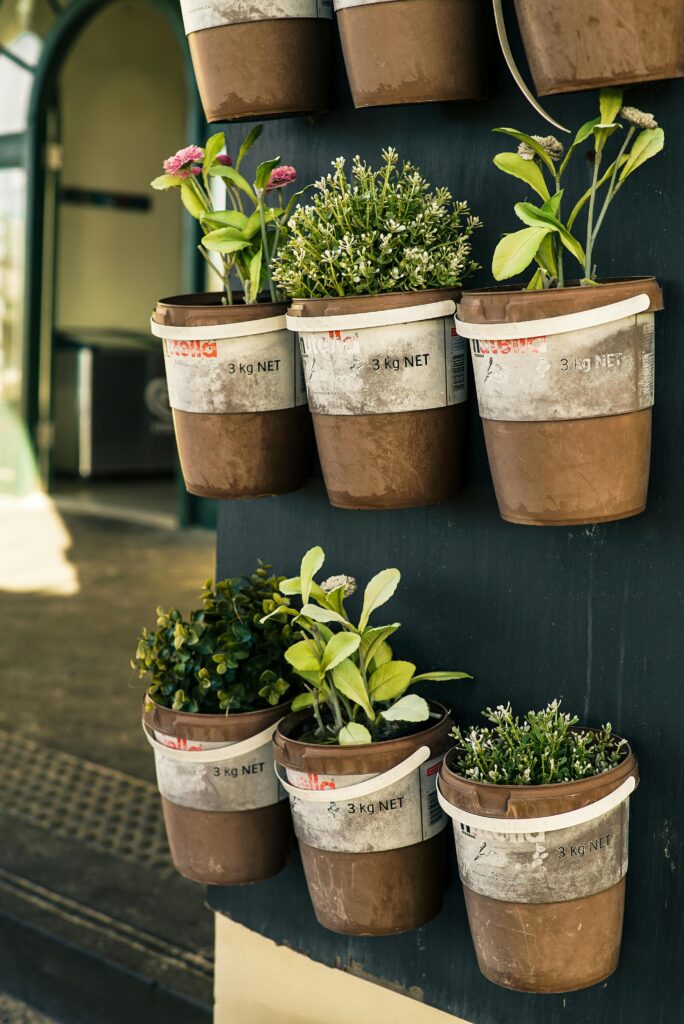
Edible Options for Vertical Herb Gardens
- Basil: Perfect for containers and thrives in full sun.
- Thyme: A low-growing herb that spills over edges attractively.
- Parsley: Easy to grow and ideal for culinary use.
- Strawberries: Compact and great for hanging pockets or wall systems.
Native Florida Plants Perfect for Vertical Growing
- Twinflower (Dyschoriste oblongifolia): A petite groundcover with lavender flowers that can adapt to vertical spaces.
- Wild Poinsettia (Euphorbia cyathophora): Compact size and bright red bracts make this native a standout.
- Corkystem Passionflower (Passiflora suberosa): A small, non-invasive passionflower vine with tiny blooms and berries.
- Pineland Twinflower (Dyschoriste angusta): Delicate and compact, perfect for small containers or wall pockets.
By incorporating a mix of these plant types, you can create a lush, diverse vertical garden that thrives in Florida’s heat and humidity while offering beauty and functionality.
Installation Tips for Your Vertical Garden
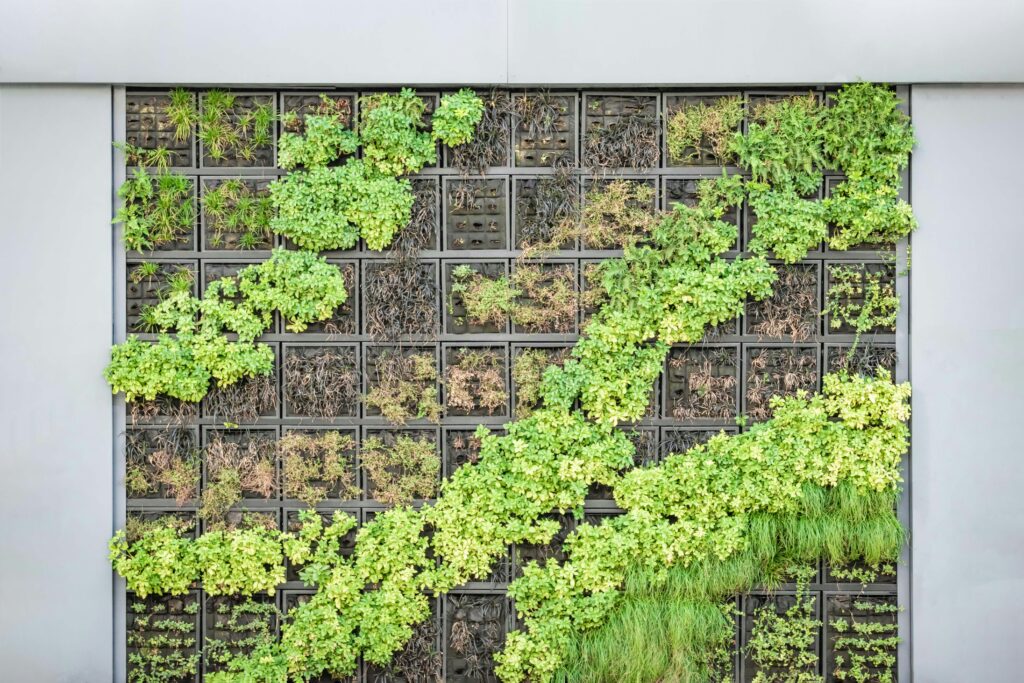
Creating a vertical garden in Florida requires careful preparation and installation to ensure the structure thrives in the hot, humid climate. Follow these detailed steps to set up your vertical garden for success:
1. Preparing Your Vertical Space
- Choose the Right Surface: Select a sturdy wall, fence, or freestanding frame capable of supporting the weight of plants, soil, and water. Brick, wood, or metal structures work well.
- Clean and Prep the Area: Remove debris, dirt, or old paint from the surface. This ensures better adherence for brackets, panels, or other support systems.
- Consider Sunlight Needs: Observe the area throughout the day to determine the amount of sunlight. Choose locations that match the light requirements of your plants, whether full sun, partial shade, or full shade.
- Plan for Drainage: Ensure the area below your garden has adequate drainage to avoid water pooling, especially during Florida’s rainy season.
2. Installing Support Systems and Waterproofing

- Wall-Mounted Systems: Use mounting brackets or hooks to attach planters, pockets, or panels to walls. Anchor them securely to handle the weight of soil and water.
- Freestanding Frames: Position A-frame structures or tiered plant stands on level ground. Use stakes to secure them in place if exposed to wind.
- Add Waterproof Barriers: For wall-mounted systems, install a waterproof membrane or plastic sheeting between the garden and the wall to protect the surface from moisture and prevent mold growth.
- Install Backing Boards: Consider using treated wood or PVC boards as a base for attaching plants, ensuring durability in Florida’s humidity.
3. Setting Up Irrigation Systems
- Drip Irrigation: Install drip lines or soaker hoses along each tier of your vertical garden. These systems provide consistent moisture without overwatering, crucial in Florida’s heat.
- Self-Watering Systems: Use containers with built-in reservoirs to reduce the need for frequent watering, especially in hotter months.
- Timers for Efficiency: Add a timer to your irrigation system to automate watering, ensuring plants are hydrated even during busy days or vacations.
- Monitor Runoff: Direct excess water into collection trays or nearby groundcover to prevent waste.
| # | Preview | Product | Price | |
|---|---|---|---|---|
| 1 |

|
240FT Drip Irrigation System,Automatic… |
$34.99 |
Buy on Amazon |
| 2 |

|
CARPATHEN Drip Irrigation System -… |
$48.97 |
Buy on Amazon |
| 3 |

|
MIXC Greenhouse Micro Drip Irrigation… |
$35.99 |
Buy on Amazon |
| 4 |

|
Kafuzi 230FT New Quick-Connect Drip… |
$29.99 |
Buy on Amazon |
| 5 |

|
Maotong 240FT Drip Irrigation System… |
$39.99 |
Buy on Amazon |
4. Proper Container Placement and Spacing
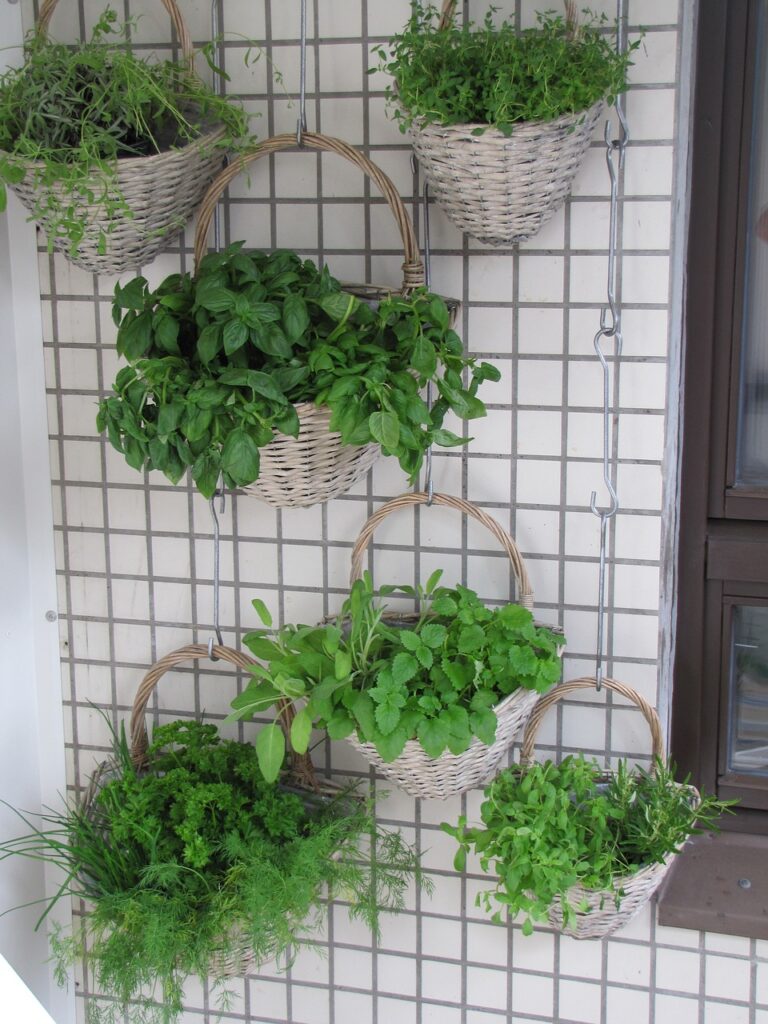
- Plan for Growth: Arrange containers with the mature size of plants in mind, leaving enough space for foliage to expand without overcrowding.
- Top-Down Planning: Place larger, bushier plants in lower tiers to prevent shading smaller ones above.
- Balanced Weight Distribution: Spread heavy containers evenly across the structure to maintain stability.
- Accessibility: Ensure containers are within reach for watering, pruning, and harvesting.
5. Initial Planting Techniques and Tips
- Prepare the Soil: Use a lightweight, well-draining potting mix with added compost or slow-release fertilizer for nutrient retention.
- Plant Strategically:
- Group plants with similar water and light needs together.
- Place trailing plants along the edges for a cascading effect.
- Anchor climbing plants near trellises or support systems.
- Secure Root Systems: Gently press down the soil around roots to eliminate air pockets, ensuring plants are stable.
- Water Thoroughly: After planting, water each container until moisture drips from the drainage holes to help roots settle.
- Monitor Regularly: Check for signs of transplant shock or stress, such as wilting or yellowing leaves, and adjust care as needed.
By following these steps, you’ll establish a thriving vertical garden that complements your Florida home while withstanding the state’s unique climate challenges.
Smart Irrigation Solutions for Vertical Gardens
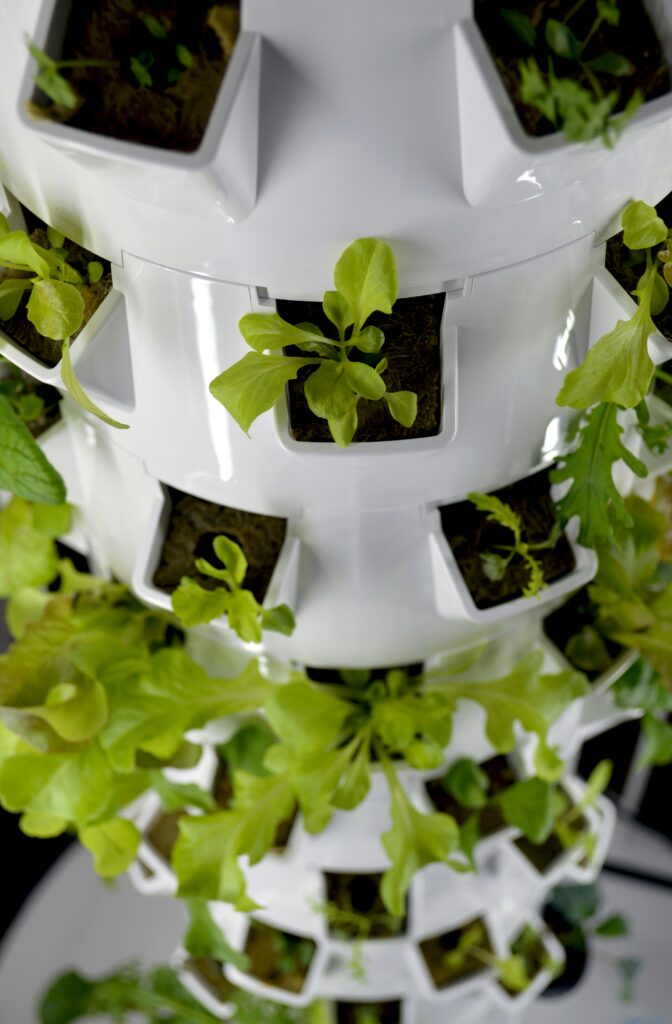
A well-designed irrigation system is essential for vertical gardens, especially in Florida’s challenging climate. The heat and humidity can quickly dry out containers, while sudden downpours can lead to overwatering. Here’s how to ensure your vertical garden stays hydrated without wasting water or causing issues.
1. Drip Irrigation System Setup
- Select a System: Opt for a low-pressure drip irrigation kit tailored for vertical gardens. These systems deliver water directly to the base of plants, reducing evaporation and runoff.
- Install Drip Lines:
- Place drip lines along each tier of your vertical garden.
- Use emitters or micro-drippers for individual plants to ensure even coverage.
- Connect to a Water Source: Attach the system to an outdoor faucet or a rain barrel. Include a pressure regulator to avoid excessive water flow that might damage plants.
- Add a Timer: Automate watering by installing a timer to run the system during early morning or evening hours when evaporation is minimal.
- Regular Maintenance: Check for clogs in emitters, especially after heavy rains that might introduce debris.
2. Self-Watering Container Options
- Integrated Reservoirs: Use containers with built-in water reservoirs at the base. These systems wick water upward as the soil dries out, keeping roots consistently hydrated.
- Wicking Systems for DIYers: Line containers with a capillary mat or use fabric wicks to pull water from a reservoir into the soil.
- Advantages for Florida Gardens: Self-watering containers are ideal for conserving water and ensuring plants stay hydrated during Florida’s intense heat, especially if you’re away for a few days.
3. Water Conservation Techniques
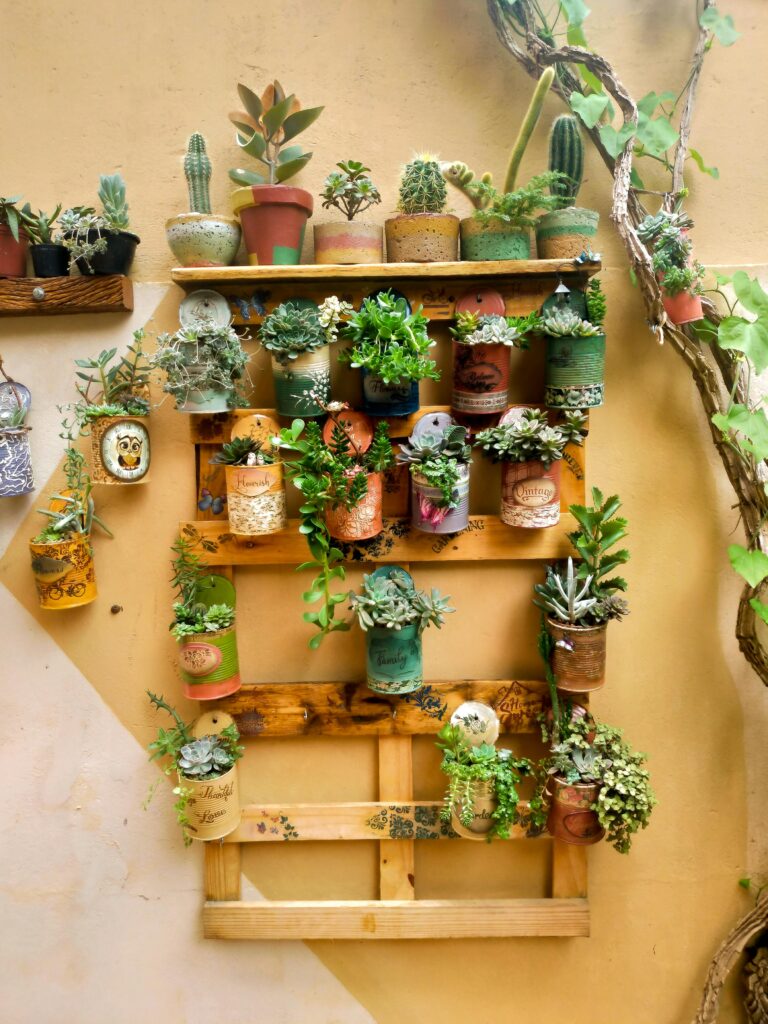
- Group Plants by Water Needs: Arrange plants with similar moisture requirements together to simplify watering and reduce waste.
- Mulch for Moisture Retention: Add a layer of organic mulch, such as coconut coir or bark chips, on top of the soil to reduce evaporation and maintain consistent moisture.
- Collect Rainwater: Install rain barrels to capture water during Florida’s rainy season, using it to irrigate your vertical garden during dry spells.
- Recycled Water: Use water from rinsing fruits, vegetables, or dishes (without soap or chemicals) to hydrate non-edible plants.
4. Moisture Monitoring Systems
- Soil Moisture Meters: Place sensors in different containers to measure soil moisture levels accurately. Choose meters with digital displays or Bluetooth connectivity for real-time updates.
- Smart Irrigation Controllers: Use controllers with built-in sensors that adjust watering schedules based on soil conditions and weather forecasts.
- Manual Testing: If you prefer low-tech solutions, stick your finger 1-2 inches into the soil. If it feels dry, it’s time to water.
5. Dealing with Florida’s Rainy Season
- Overflow Management: Ensure all containers have adequate drainage holes to prevent waterlogging during sudden downpours.
- Adjust Irrigation Systems: Turn off automated irrigation systems temporarily when heavy rains are expected. Use manual overrides or rain-sensing devices to avoid overwatering.
- Raise Containers: Elevate pots slightly off the ground using plant feet or stands to ensure excess water drains freely.
- Protect Against Root Rot: During prolonged rains, inspect plants for signs of root rot (yellowing leaves, wilting) and allow containers to dry out completely before the next watering.
By using these smart irrigation solutions, you can maintain a thriving vertical garden in Florida, ensuring your plants get the water they need—without overdoing it. This balanced approach saves time, conserves resources, and keeps your garden looking its best year-round.
Maintenance and Care in Florida’s Climate
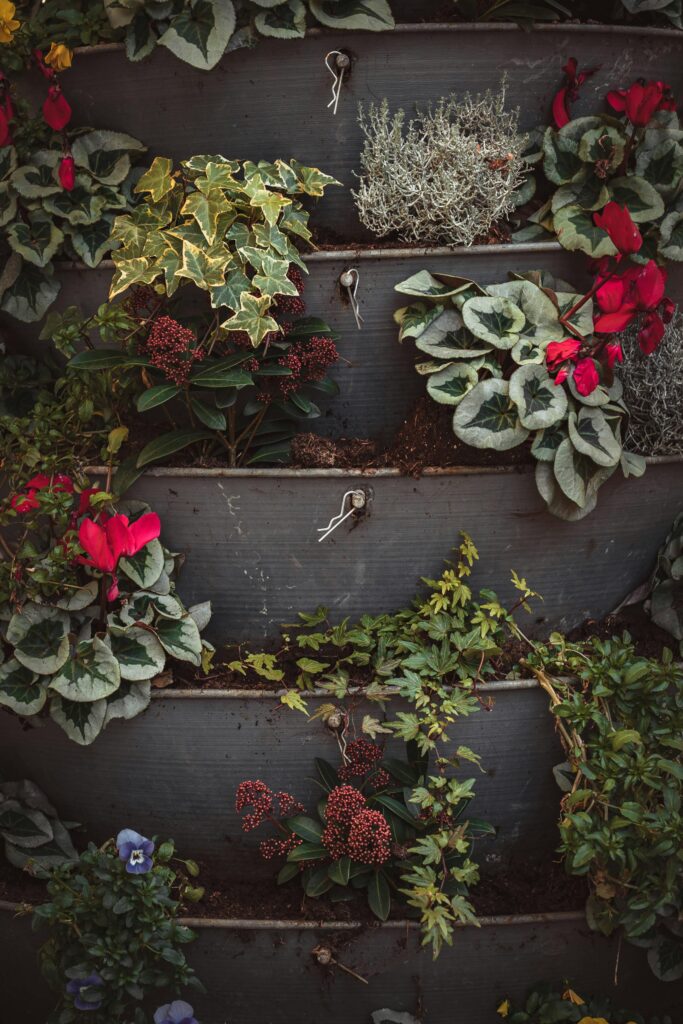
A vertical container garden in Florida requires consistent maintenance to handle the heat, humidity, and occasional storms. With regular care, your plants will stay healthy, vibrant, and productive. Here’s a guide to keeping your garden thriving.
1. Regular Pruning and Trimming Schedules
- Encourage Healthy Growth: Regularly trim overgrown branches and remove dead or yellowing leaves. This promotes airflow and reduces the risk of fungal diseases in Florida’s humid conditions.
- Shape for Aesthetics: Prune trailing plants and vines to maintain an attractive form, ensuring they don’t overwhelm neighboring plants.
- Deadheading Blooms: For flowering plants, snip off spent blooms to encourage new flowers and prevent unnecessary energy expenditure.
- Frequency: Aim for a bi-weekly pruning session, increasing to weekly during the peak growing season.
2. Fertilizing Vertical Container Plants
- Choose the Right Fertilizer: Use a balanced, slow-release fertilizer for most plants, or tailor nutrients based on plant type (e.g., high phosphorus for flowering plants, nitrogen-rich for leafy greens).
- Frequency of Feeding:
- Fertilize every 4-6 weeks with slow-release granules.
- For quick results, supplement with liquid fertilizers every 2-3 weeks during active growth periods.
- Special Tip for Florida’s Rainy Season: Apply fertilizers after heavy rains to replenish nutrients that might have been leached from the soil.
- Healthier, Bigger Plants with Grow Big: Grow big with our vegetable…
- Big Blooms Start with Big Bloom: Achieve vibrant, healthy blooms with our…
- Boosts Organic Yields: True Liquid Tomato & Vegetable Food promotes…
3. Pest Management Strategies
- Common Florida Pests: Watch for aphids, whiteflies, spider mites, and caterpillars, all of which thrive in warm climates.
- Preventative Measures:
- Use companion planting to deter pests. For example, marigolds can repel aphids.
- Inspect plants regularly, focusing on the undersides of leaves where pests often hide.
- Keep the garden tidy by removing fallen leaves and debris, which can attract pests.
- Eco-Friendly Solutions:
- Spray plants with neem oil or insecticidal soap to control infestations.
- Encourage natural predators like ladybugs and lacewings by planting nectar-rich flowers nearby.
4. Seasonal Care Adjustments
- Summer: Provide afternoon shade for heat-sensitive plants, increase watering, and use mulch to retain soil moisture.
- Fall: Transition to heat-tolerant cool-season plants like leafy greens and herbs.
- Winter: Protect tender plants during cold snaps by covering them with frost cloths or moving portable containers indoors.
- Spring: Refresh your garden with vibrant annuals and warm-season vegetables, and check irrigation systems for damage from winter freezes.
5. Replacing and Rotating Plants
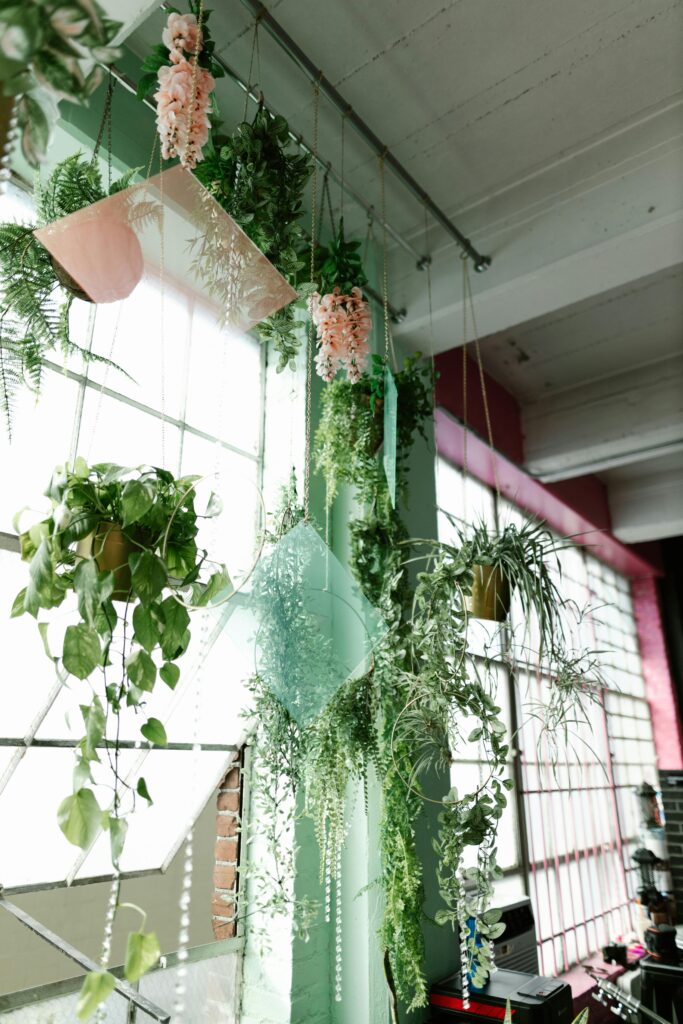
- Replace Fading Plants: Remove spent annuals or underperforming plants to make room for new ones. This keeps your garden fresh and prevents pests or diseases from taking hold.
- Rotate Crops for Edibles: To maintain soil health, rotate herbs and vegetables with similar needs but different nutrient demands. For example, alternate between tomatoes and leafy greens in the same containers.
- Replenish Soil: When replacing plants, add fresh potting mix or compost to revitalize the soil with essential nutrients.
With these strategies, you’ll maintain a lush and thriving vertical container garden no matter what Florida’s climate throws your way. Routine care and attention will ensure your garden remains a vibrant centerpiece of your home.
Design Tips for Eye-Catching Vertical Gardens
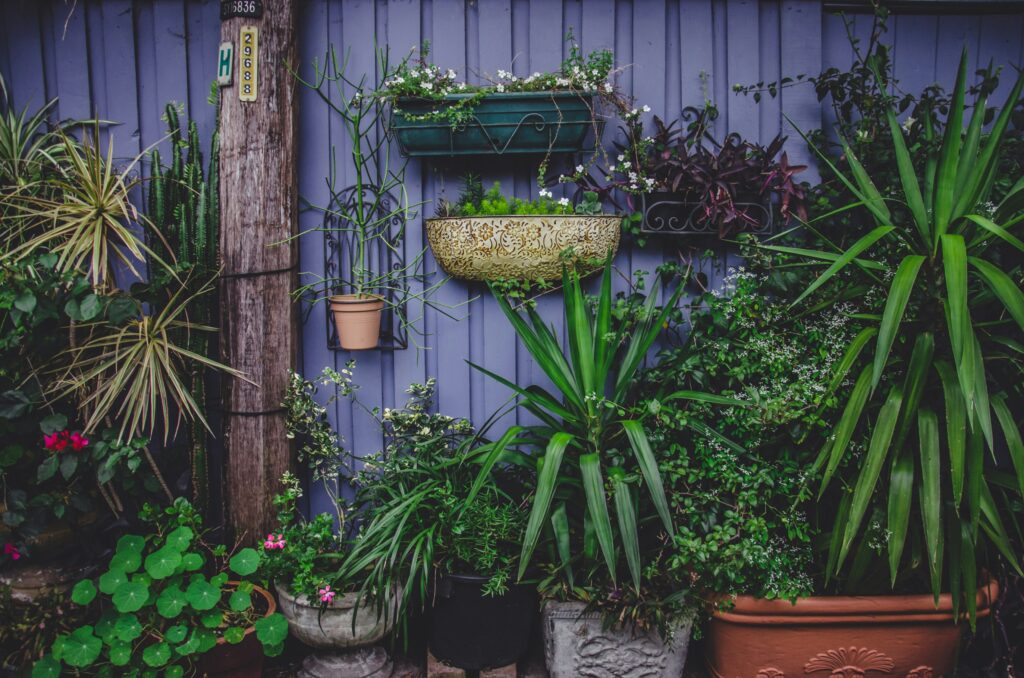
Designing a vertical garden is as much about aesthetics as it is about functionality. The right mix of plants, colors, textures, and thoughtful planning can turn a simple wall or vertical structure into a stunning feature in your Florida home. Let’s explore how to create a garden that draws the eye and sparks joy year-round.
Creating Visual Interest with Plant Combinations
A successful vertical garden isn’t just about individual plants—it’s about how they interact. Combine plants with varying growth habits to create a layered, multidimensional effect.
- Why It Works: Blending trailing, upright, and bushy plants creates depth, turning a flat vertical surface into a dynamic living tapestry.
- Examples:
- Pair trailing plants like creeping Jenny or golden pothos with upright plants like rosemary or dracaena.
- Combine edible greens like lettuce with flowering varieties such as petunias for a functional yet decorative garden.
Color Schemes That Pop in Vertical Spaces
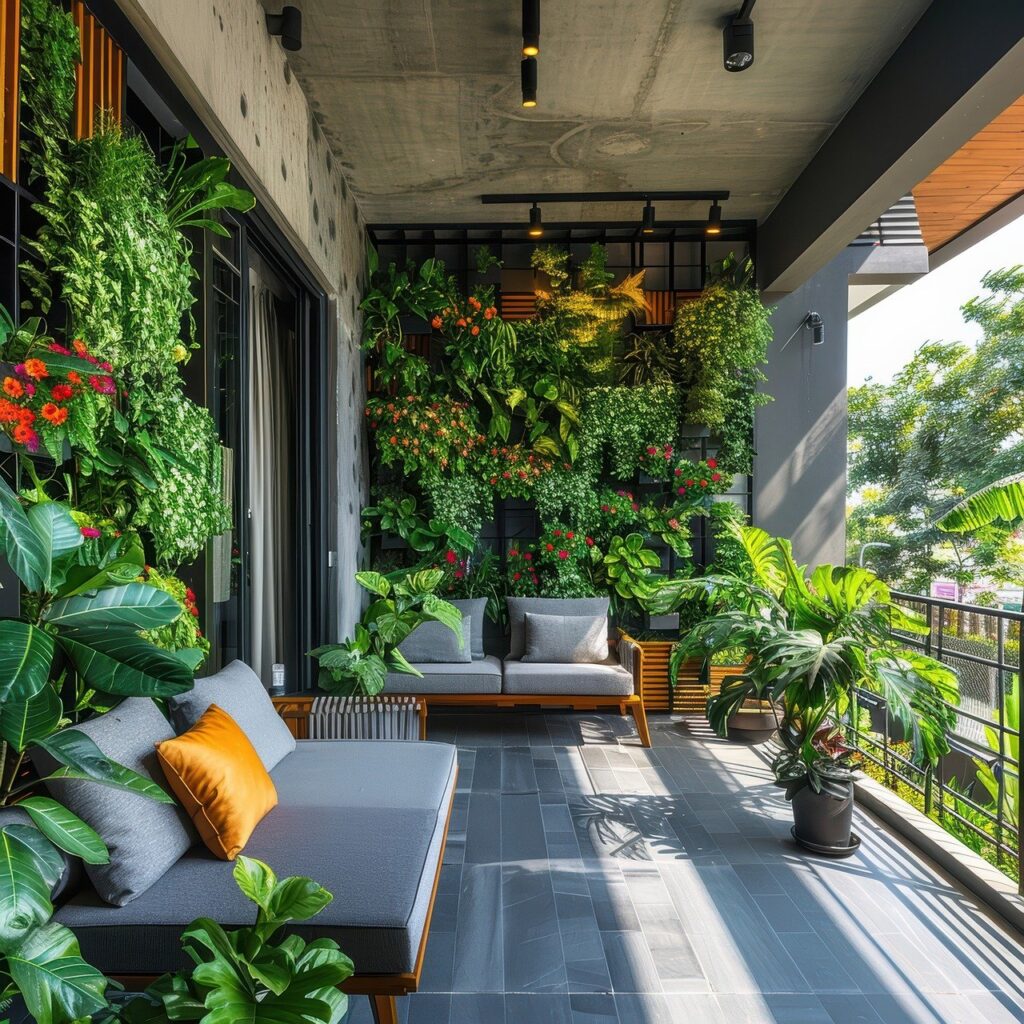
Use bold color combinations to make your vertical garden visually striking. Think about contrasting or complementary colors that stand out against Florida’s bright sunlight.
- Why It Works: Strategic color choices can create focal points, draw attention to specific areas, or enhance the overall atmosphere of your garden.
- Examples:
- Bright yellows and purples (e.g., lantana and verbena) for a high-energy look.
- Subdued pastels like dusty miller and pink calibrachoa for a calming effect.
- Monochromatic schemes, such as various shades of green from ferns, succulents, and ivy, for a minimalist aesthetic.
Texture and Height Variations
Incorporating plants with different textures and heights adds interest and keeps the eye moving. Choose a mix of smooth, spiky, feathery, and velvety foliage for variety.
- Why It Works: Contrast in texture creates a sensory experience and prevents the garden from looking too uniform or flat.
- Examples:
- Combine the feathery fronds of asparagus fern with the bold, waxy leaves of croton.
- Use grasses like fountain grass alongside succulents such as echeveria to mix softness and structure.
- Place tall, upright plants like snake plant near shorter, mounding varieties like coleus.
Year-Round Interest Planning
To ensure your vertical garden stays vibrant through every season, choose plants that peak at different times of the year.
- Why It Works: Year-round interest keeps your garden looking lush and alive, no matter Florida’s weather.
- Examples:
- Use warm-season flowers like zinnias for summer, transitioning to hardy ferns or pansies in the cooler months.
- Incorporate evergreen foliage plants like philodendrons to provide a consistent backdrop.
- Add seasonal edibles like strawberries in spring and kale in fall for practical beauty.
Incorporating Lighting Elements
Don’t let your vertical garden fade into the background at night. Use lighting to highlight your plants and create ambiance.
- Why It Works: Proper lighting transforms your garden into an evening feature and makes it more usable in the cooler nighttime hours.
- Examples:
- String fairy lights or LED strips around the edges of your structure for a soft glow.
- Install spotlights to illuminate standout plants or trailing greenery.
- Use solar-powered lights for eco-friendly, low-maintenance illumination.
By thoughtfully combining colors, textures, heights, and lighting, you can design a vertical garden that’s as visually captivating as it is practical. With these design tips, your garden will be a unique, ever-changing showcase of Florida-friendly plants.
Troubleshooting Common Florida Vertical Garden Issues
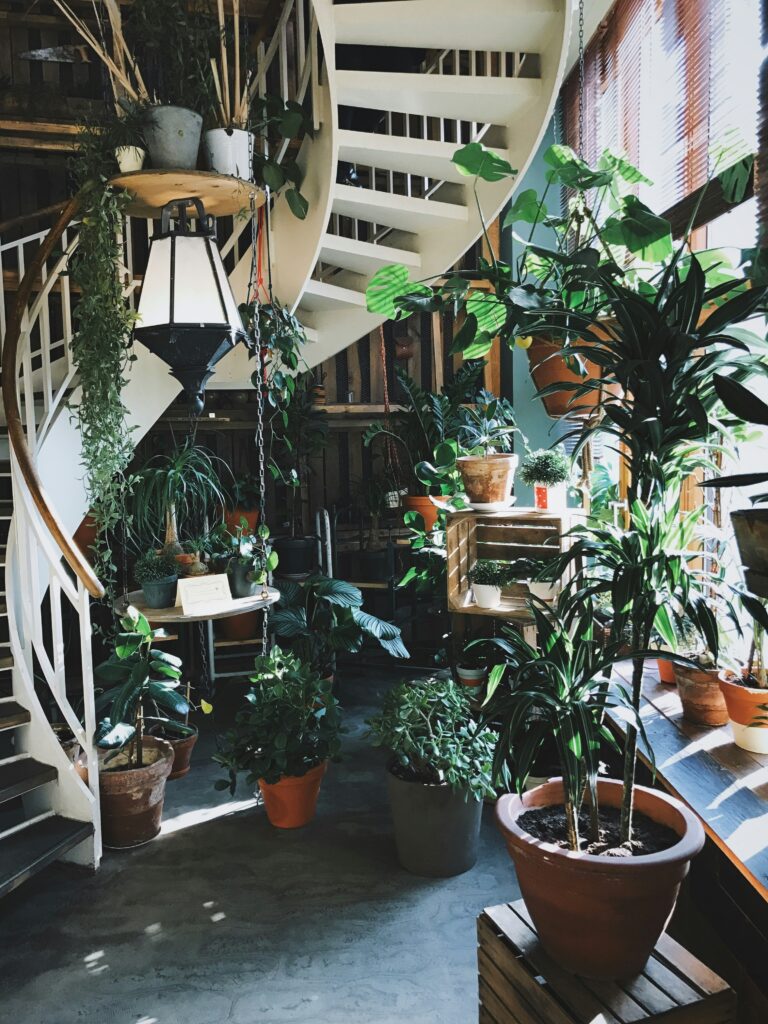
Vertical gardens in Florida come with unique challenges, from intense weather conditions to the potential for structural damage. Proactive troubleshooting ensures your garden stays healthy and your home remains protected. Here’s how to address the most common issues.
Managing Water Runoff
Vertical gardens can produce significant water runoff, especially in Florida’s rainy season. Excess water can damage surfaces and create waste.
- Solution:
- Install drip trays or gutters beneath your planters to collect and redirect runoff.
- Use water-absorbing mats behind wall-mounted systems to catch excess moisture.
- Water sparingly and use drip irrigation to ensure plants get just enough water without oversaturating.
Preventing Wall Damage and Mold
Moisture and soil residue from vertical gardens can seep into walls, leading to structural damage or mold growth.
- Solution:
- Use a waterproof barrier or backing board between the garden and your wall.
- Opt for freestanding systems or ensure wall-mounted planters are properly sealed and spaced for airflow.
- Regularly inspect for signs of mold or water damage, and address them promptly with mold-resistant sprays or repairs.
Dealing with Plant Diseases in Vertical Settings
Closely spaced plants in vertical gardens are more susceptible to diseases spreading quickly. Florida’s humidity further exacerbates this issue.
- Solution:
- Maintain good airflow by spacing plants appropriately and pruning overcrowded areas.
- Choose disease-resistant varieties suited to Florida’s climate.
- Inspect plants weekly for early signs of diseases like mildew or root rot, and treat with organic fungicides or neem oil.
Adjusting for Uneven Growth
Some plants may grow faster than others, leading to an unbalanced appearance in your vertical garden.
- Solution:
- Use growth rate as a guide when planning placements—slower growers like succulents should be combined with similar species.
- Rotate plants or switch out faster-growing species to maintain balance.
- Prune regularly to keep aggressive plants in check and ensure sunlight reaches slower-growing ones.
Hurricane Season Preparations

Florida’s hurricane season can pose serious risks to vertical gardens, including wind damage and plant loss.
- Solution:
- Anchor freestanding systems securely or relocate them to sheltered areas during storms.
- Use lightweight containers that are easy to move but sturdy enough to withstand wind.
- Avoid using delicate or top-heavy plants in exposed vertical gardens—opt for more resilient species like native grasses.
- If a storm is approaching, remove lightweight planters and secure wall-mounted systems with additional supports.
By addressing these potential issues before they arise, you can enjoy a thriving, low-maintenance vertical garden that withstands Florida’s unique challenges. With the right care, your garden will remain a stunning feature for years to come.
You’re Ready for Your Backyard Retreat
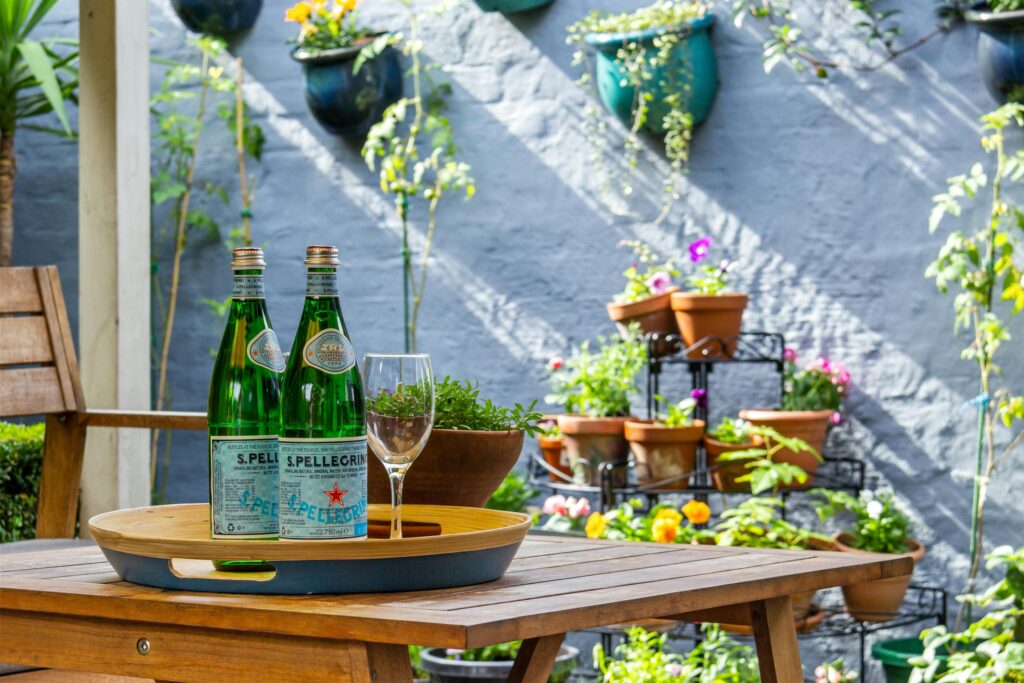
You’re now equipped with everything you need to create your own slice of vertical paradise! Remember, vertical gardening in Florida is an adventure, and every garden tells its own unique story.
Don’t be afraid to experiment and let your creativity climb to new heights (pun intended!). Start small, learn from each success and setback, and watch as your vertical garden transforms into a stunning living masterpiece.
Your walls are waiting to come alive – so grab those containers and let’s get growing! And hey, when your friends ask about your gorgeous green wall, you’ll know exactly how to help them create their own vertical oasis.
Last update on 2025-08-07 / Affiliate links / Images from Amazon Product Advertising API
This product presentation was made with AAWP plugin.












